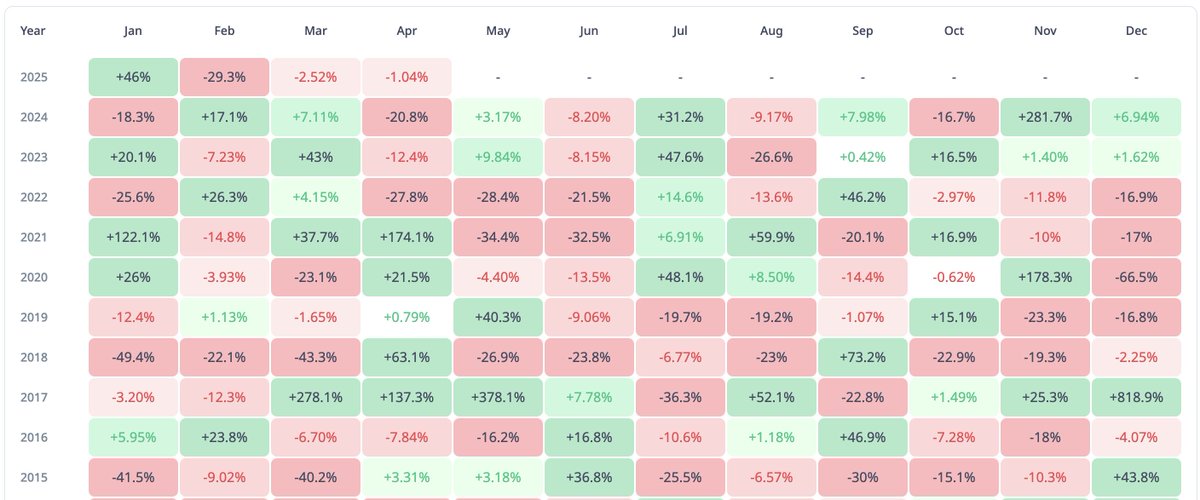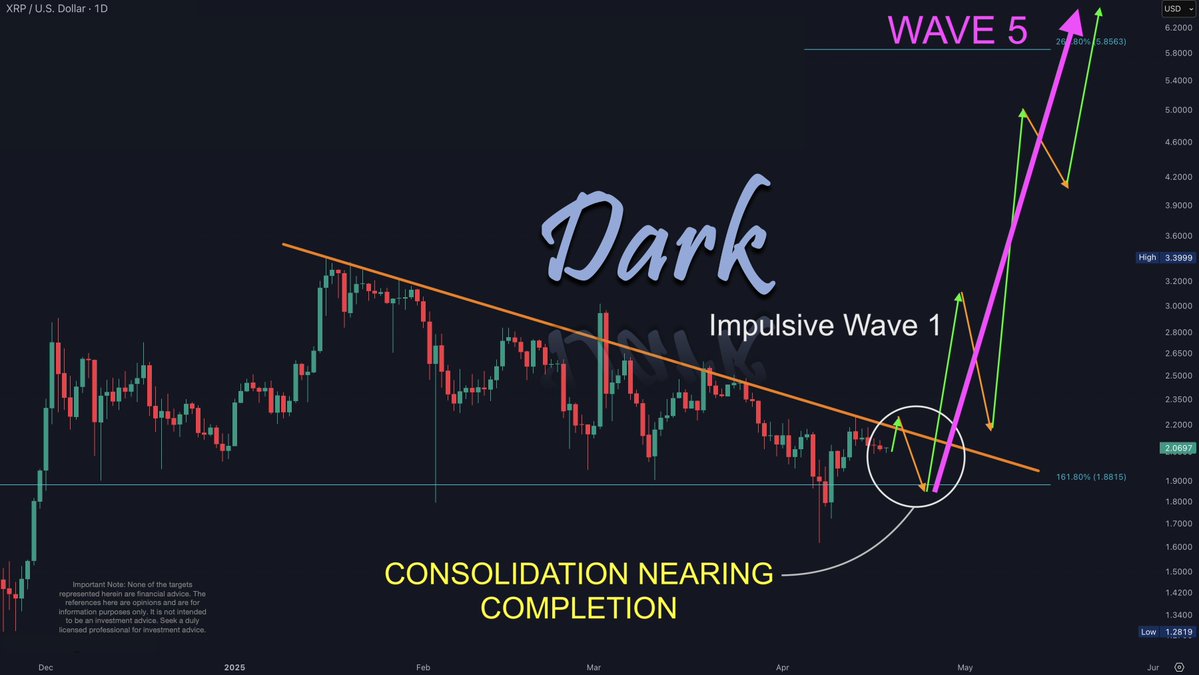As the Web3 industry grows louder about inclusion, the harder questions remain quietly unresolved. Bitget’s Blockchain4Her initiative and its partnership with Cryptogirl take a more deliberate approach. They pair technical learning with mentorship, career pathways, and a candid look at what still holds newcomers back.
In this Q&A, BeInCrypto explores how the collaboration was shaped and what both teams believe needs to shift for inclusion efforts to go beyond optics.
BeInCrypto: Let’s start with the origin of Blockchain4Her. What led Bitget to launch this initiative, and what specific gap or need were you trying to address when it was first conceived?
Bitget: Well, the idea for Blockchain4Her really came about when we saw some data that just didn’t sit right with us. A study actually showed that female-led blockchain startups were getting a surprisingly small slice of the funding pie, only about 6%. That felt like a real imbalance, a missed opportunity.
So, we launched Blockchain4Her back in January 2024, putting a significant $10 million on the table, because we truly believe in the power of diversity and inclusion in the blockchain space. It’s not just about fairness; it’s about bringing different perspectives and ideas to the sector, which ultimately benefits everyone.
And when we say we want to help women, we mean it concretely. Blockchain4Her includes different activities designed to support women at every stage, whether they’re just starting to explore the sector or looking to scale their existing ventures. We’re talking about educational resources to build their knowledge, funding opportunities to get their ideas off the ground, and events where their achievements can be recognized and celebrated.
Take our Mentorship program, for example. The goal there is simple: connect women who are eager to build in Web3 with experienced mentors – people who’ve been there, done that – and can offer guidance and support as they navigate their own unique journeys. We really want to foster that connection and knowledge sharing.
BeInCrypto: Why did Bitget choose Cryptogirl as a partner for this course? What made this collaboration feel aligned with Blockchain4Her’s mission?
Bitget: When we were looking for partners for Blockchain4Her, connecting with CryptoGirl felt like a natural fit. They’re the leading Italian community for women in Web3, and they’re incredibly active in the space, sharing valuable insights and guidance. So, it was an obvious choice to collaborate with them on this initiative.
Our initial conversations really focused on the specific challenges women face in Web3, particularly from their direct experience within the Italian landscape, where they have a strong presence. What became clear was that for many women, Web3 and blockchain still feel distant, overly complex, even intimidating. This perception often prevents them from even considering entering the sector.
Based on this understanding, it became evident that our first joint initiative with CryptoGirl needed to address this head-on. We decided to prioritize education, creating a course that’s accessible to everyone, breaking down the fundamentals in a clear and straightforward manner. We wanted to demystify the technology and lower the barrier to entry, making Web3 feel less like an exclusive club and more like a welcoming space for anyone interested in learning and building.
BeInCrypto: From Cryptogirl’s perspective, what made this partnership with Bitget the right fit? What impact did you believe you could achieve together that might have been harder to accomplish independently?
Cryptogirl: Choosing Bitget as a partner for Blockchain4Her was a really exciting decision because their vision for the future of Web3 resonated deeply with Cryptogirl’s own goals. We both recognized that by joining forces, we could significantly amplify our impact, elevate more women within the Web3 space, and ultimately break down existing barriers at a much faster pace than we could achieve individually.
Beyond that shared ambition, the fact that Bitget’s CEO is a woman was also a powerful and inspiring factor. It signaled a clear commitment from the top to the values of diversity and inclusion that Blockchain4Her champions. And, well, let’s just say that with that kind of alignment and leadership, the potential for truly making a global impact definitely felt within reach!
BeInCrypto: A number of similar Web3 education programs for women have launched in recent years. In terms of structure, delivery, or guiding philosophy, what makes this course stand out?
Cryptogirl: Beyond providing a solid introduction to Web3 concepts and technologies, the course offers hands-on experiences, allowing participants to directly engage with Web3 tools in a collaborative and supportive environment.
What truly sets it apart in my opinion is its practical, career-oriented focus. We guide participants through the concrete steps needed to find work in the Web3 space: which platforms to use, how to tailor and ‘Web3-optimize’ your LinkedIn profile, and what kinds of job opportunities are out there.
Bitget: What is worth noting is that the course combines Bitget’s established educational framework with Cryptogirl’s on-the-ground understanding of the Web3 space to create a truly comprehensive and relevant learning experience. In addition, to further motivate and empower participants, we’ve also incorporated some significant bonuses. Imagine receiving a certificate personally signed by Bitget CEO Gracy Chen – that’s a fantastic addition to any professional profile. We’re also offering the incredible opportunity to apply for an internship at Bitget, providing real-world experience in the industry. And finally, the chance to receive one-on-one career advice from the experts at CryptoGirl will offer personalized guidance to help women navigate their paths in Web3.
BeInCrypto: This course targets those who may feel hesitant to enter Web3, especially women who fear “getting it wrong.” How did you design the sessions to address those psychological and social barriers, not just technical ones?
Bitget: We really wanted to cultivate a “safe space” where everyone felt comfortable asking questions, experimenting, and learning without any fear of judgment.
We actively incorporated interactive activities into each session. This wasn’t just about passive listening; we wanted to encourage participants to immediately put what they were learning into practice. That hands-on experience can be incredibly empowering and helps to break down the feeling that Web3 is too abstract or difficult to grasp.
Crucially, we always included Q&A sessions for all participants to voice their questions, concerns, and perspectives openly. Creating that space for dialogue and addressing doubts directly is vital in building confidence.
Furthermore, leveraging the strength of both Bitget’s and CryptoGirl’s existing communities was key. We actively encouraged participants to join these supportive networks where they could connect with like-minded individuals and key figures in the Web3 space. Building those connections and finding a community where they feel a sense of belonging is incredibly important in overcoming feelings of isolation or intimidation.
Cryptogirl: We were very intentional in designing the course to lower both psychological and social barriers, especially for women who feel hesitant or intimidated by the Web3 space. First, we made sure that the environment is welcoming and non-judgmental—there’s no such thing as a stupid question here.
Every session begins with grounding, inclusive language and a reminder that Web3 is still new for everyone. We also chose mentors and speakers who reflect the diversity we want to see in the space—women who’ve been through the same doubts, imposter syndrome, or fear of not being ‘technical enough.’ Their stories show that there are many valid entry points into Web3.
BeInCrypto: There’s often a wide gap between foundational education and actual opportunity. How are you making sure that participants don’t just learn, but also have clear pathways to contribute or work in the ecosystem after the course?
Cryptogirl: We really envisioned this project as more than just a course you complete and then it ends. We wanted to create tangible pathways for women to actively engage with the Web3 world long after the sessions concluded. That’s why we intentionally integrated opportunities for real-world connection and growth, think mentorship, project collaboration or internships at Bitget.
Ultimately, our goal is to bridge the gap between theoretical learning and practical application, turning the phrase ‘I learned this’ into the empowering reality of ‘I’m actually doing this.’ We believe that community is our superpower in achieving this. By building strong networks and fostering collaboration, we’re ensuring that no one is left to navigate the complexities of Web3 on their own.
Bitget: The way we designed each module of the Blockchain4Her course wasn’t just about delivering theoretical knowledge; each one has a very specific, practical goal in mind to empower participants beyond the learning phase.
The first module is really about building a strong foundational understanding of how blockchain technology actually works. We want to equip participants with the right tools and vocabulary to navigate the Web3 space with greater confidence, understand its underlying value, and recognize its potential applications.
Moving into the second module, we delve into the diverse real-world applications of Web3. This is designed to broaden their horizons, showcase the vast array of sectors within the space, and allow them to identify areas that truly spark their interest and align with their passions.
Finally, the third module takes a very practical approach to career development in Web3. We provide concrete, actionable tips on how to find jobs in this evolving industry, clearly outlining the specific skills and qualifications that are often sought after, especially when compared to more traditional sectors. We aim to demystify the job search process and provide tangible steps for participants to take their first or next career leap into Web3.
BeInCrypto: Looking beyond participation numbers, how do you define success for this course and the broader Blockchain4Her initiative? What metrics or outcomes matter most to you?
Bitget: For us, the true measure of success for this course, and for the broader Blockchain4Her initiative, goes beyond just the number of participants. It’s really about the impact we have on individual women’s lives. If we can reach as many women as possible and know that we’ve made a tangible difference in their journey – whether it’s sparking their interest in Web3, giving them the confidence to pursue a career change, or supporting them in launching their own projects – that’s a real win.
Getting the opportunity to connect with these women and follow their progress as they navigate the Web3 space is incredibly rewarding. We truly believe that women bring immense strength and valuable perspectives to this industry, and our ultimate goal is to empower them, build their confidence, and, in doing so, contribute to a meaningful shift in those gender gap statistics that inspired us to create Blockchain4Her in the first place. Seeing more women thrive and lead in Web3, that’s our definition of success.
If you’re a woman looking to take your first steps into the Web3 space or build a career in blockchain, the Blockchain4Her x Cryptogirl course is now open for registration. You can join and learn more here: https://lu.ma/nrvoc0q7.
The post Bitget’s Blockchain4Her and Cryptogirl Rethink How Women Break Into Web3 appeared first on BeInCrypto.






